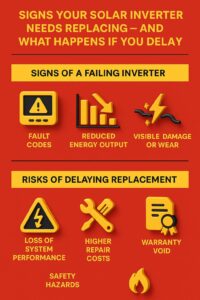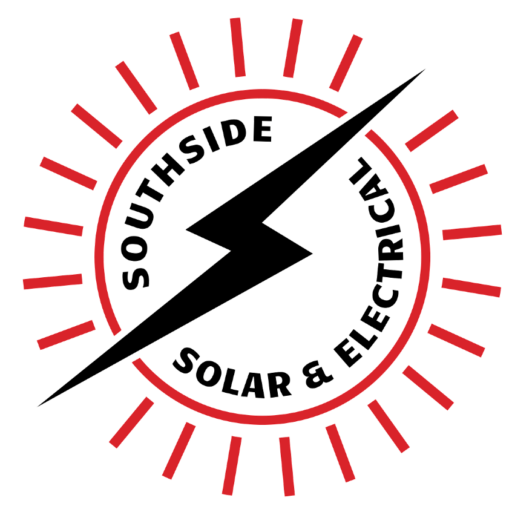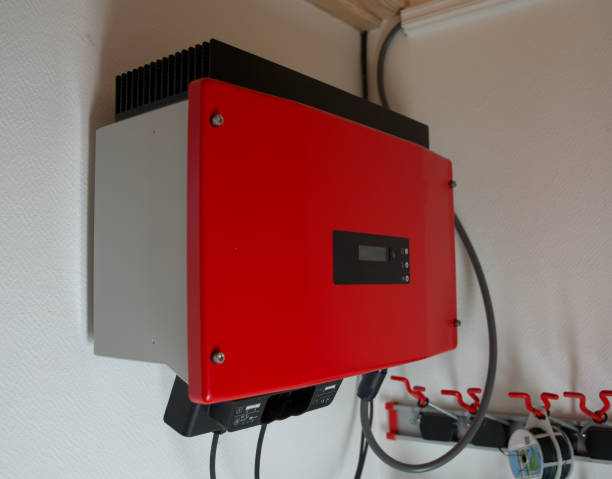Inverters are central to the operation of any solar power system, converting direct current (DC) from panels into alternating current (AC) for use in homes and businesses. In Perth, where solar systems operate for many hours each day, inverters are subject to continuous load and eventual wear. Identifying early signs of inverter failure allows for timely replacement, minimising system downtime and avoiding additional repair costs.
Function and Expected Lifespan
Solar inverters typically last between 8 and 12 years depending on brand, installation quality, environmental conditions, and maintenance. While panels can last decades, inverters have more electronic components that degrade over time. Monitoring their performance is essential to ensure ongoing system efficiency.
Indicators of a Failing Inverter
1. Fault Codes and Error Messages
Most inverters display codes or messages to indicate faults such as:
- Grid voltage fluctuations.
- Insulation resistance faults.
- Overheating due to cooling fan or ventilation issues.
- DC isolation faults.
These alerts should be addressed promptly by a qualified solar company Perth to prevent further issues.
2. Reduced Energy Output
A noticeable drop in electricity generation, confirmed by system monitoring data, can indicate inverter inefficiency or intermittent shutdown. If panel condition and weather patterns are unchanged, the inverter should be tested for faults.
3. Visible Damage or Wear
Signs include:
- Burnt or discoloured wiring.
- Corrosion on connections or casing.
- Excessive heat on the inverter housing.
- Unusual mechanical noise.
Physical damage often requires immediate replacement to avoid operational or safety risks.

4. Frequent System Shutdowns
Repeated or random shutdowns during normal operation suggest internal component degradation. This may be related to ageing capacitors, control circuitry failure, or unstable connections.
Risks of Delaying Replacement
Failing to replace a defective inverter can result in:
- Extended loss of system performance.
- Higher electricity costs due to grid reliance.
- Damage to panels, cabling, or monitoring systems.
- Potential safety hazards from electrical faults.
- Possible voiding of warranties or insurance cover.
Maintenance and Prevention
Preventative measures include:
- Annual inspections and servicing.
- Regular review of performance data.
- Prompt response to alerts or error codes.
- Ensuring adequate ventilation and cooling.
Specialist servicing from providers experienced in solar inverters Perth helps maintain compliance with electrical standards and maximise system reliability.
Conclusion
Monitoring inverter performance, responding to faults promptly, and replacing units before complete failure ensures uninterrupted solar system operation and protects the overall investment. A proactive approach reduces long-term costs, prevents safety risks, and maintains optimal energy production.

